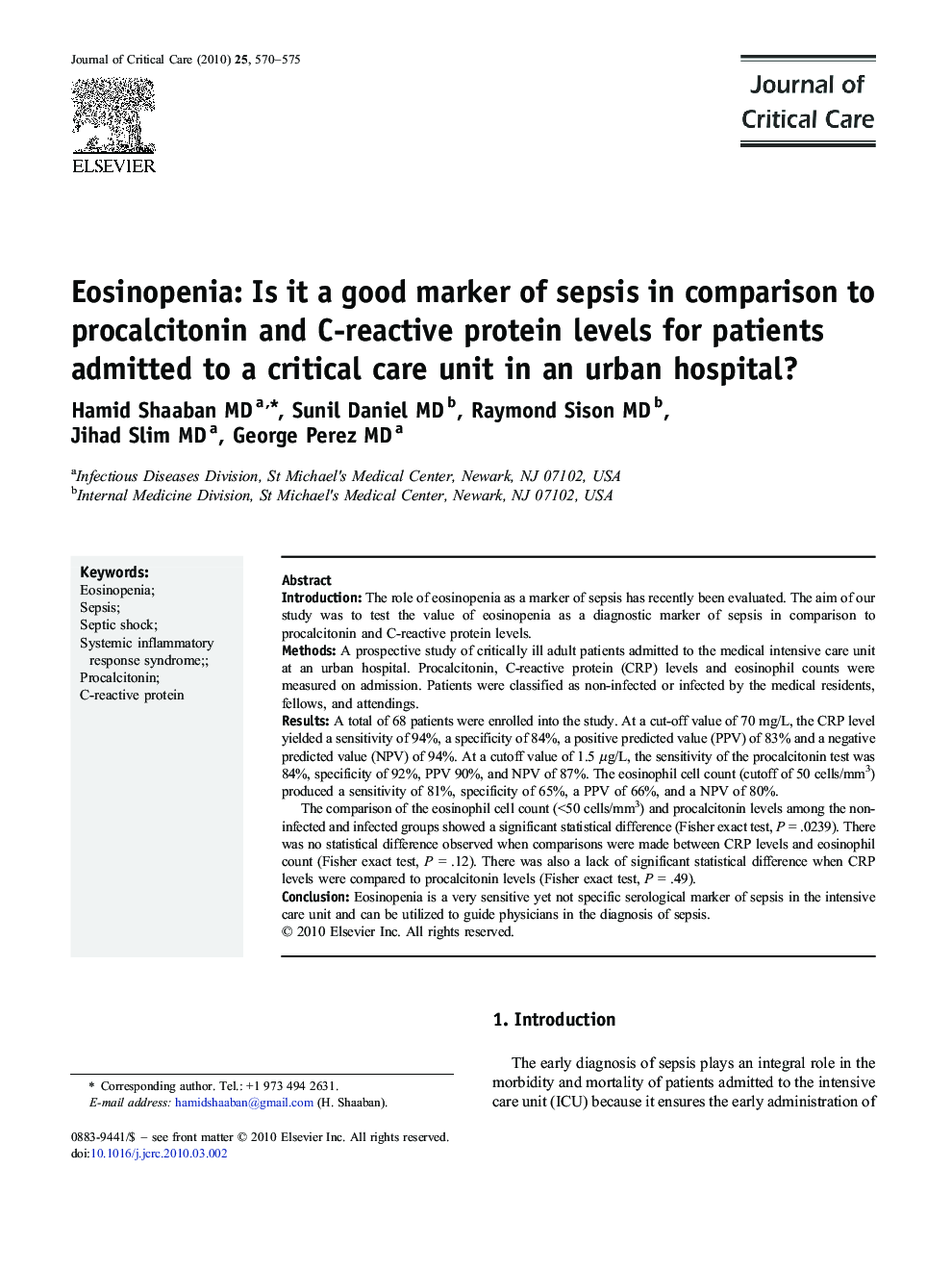| Article ID | Journal | Published Year | Pages | File Type |
|---|---|---|---|---|
| 2765456 | Journal of Critical Care | 2010 | 6 Pages |
IntroductionThe role of eosinopenia as a marker of sepsis has recently been evaluated. The aim of our study was to test the value of eosinopenia as a diagnostic marker of sepsis in comparison to procalcitonin and C-reactive protein levels.MethodsA prospective study of critically ill adult patients admitted to the medical intensive care unit at an urban hospital. Procalcitonin, C-reactive protein (CRP) levels and eosinophil counts were measured on admission. Patients were classified as non-infected or infected by the medical residents, fellows, and attendings.ResultsA total of 68 patients were enrolled into the study. At a cut-off value of 70 mg/L, the CRP level yielded a sensitivity of 94%, a specificity of 84%, a positive predicted value (PPV) of 83% and a negative predicted value (NPV) of 94%. At a cutoff value of 1.5 μg/L, the sensitivity of the procalcitonin test was 84%, specificity of 92%, PPV 90%, and NPV of 87%. The eosinophil cell count (cutoff of 50 cells/mm3) produced a sensitivity of 81%, specificity of 65%, a PPV of 66%, and a NPV of 80%.The comparison of the eosinophil cell count (<50 cells/mm3) and procalcitonin levels among the non-infected and infected groups showed a significant statistical difference (Fisher exact test, P = .0239). There was no statistical difference observed when comparisons were made between CRP levels and eosinophil count (Fisher exact test, P = .12). There was also a lack of significant statistical difference when CRP levels were compared to procalcitonin levels (Fisher exact test, P = .49).ConclusionEosinopenia is a very sensitive yet not specific serological marker of sepsis in the intensive care unit and can be utilized to guide physicians in the diagnosis of sepsis.
